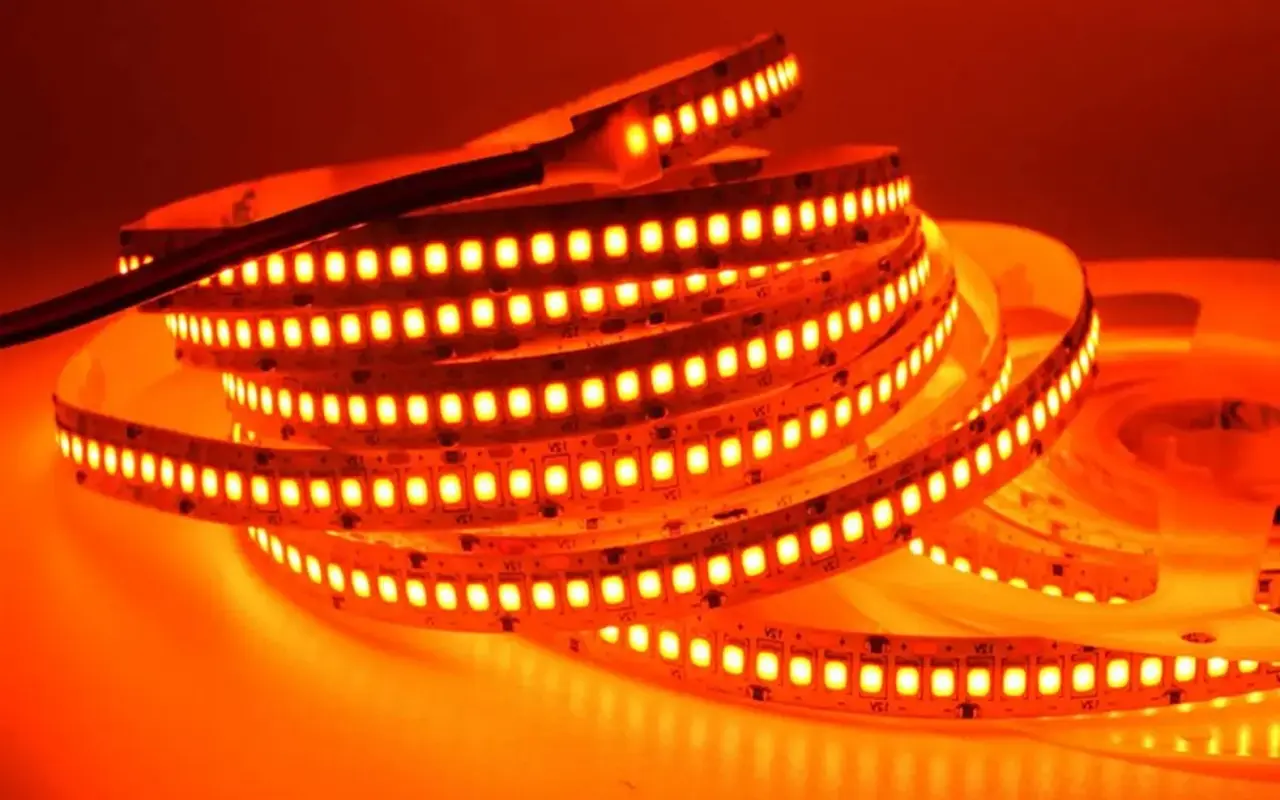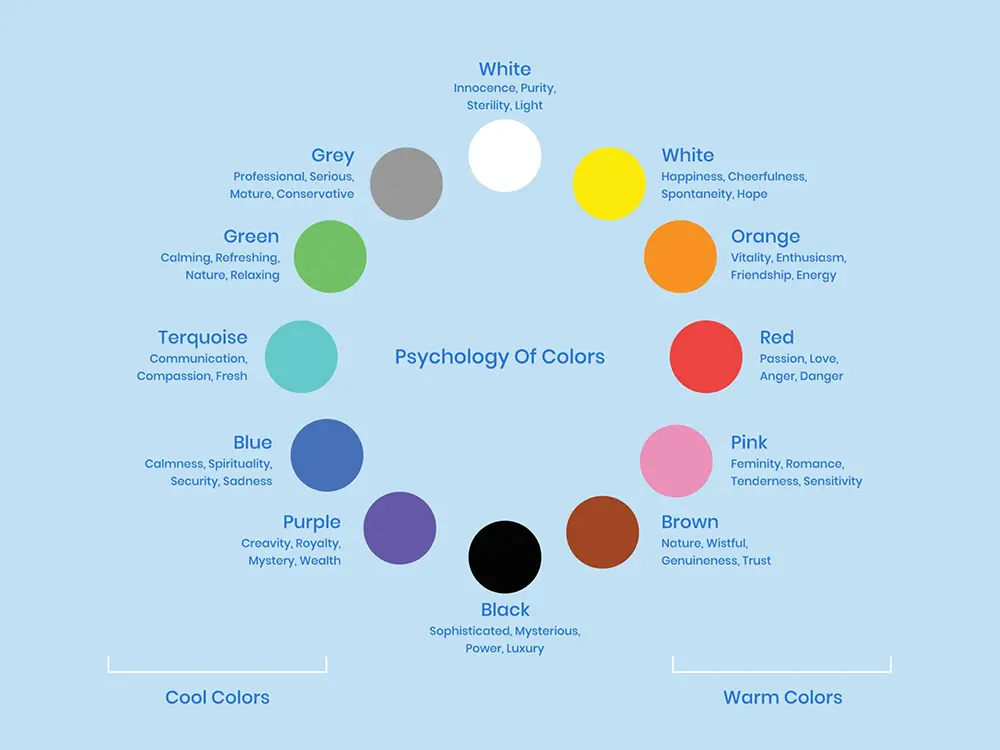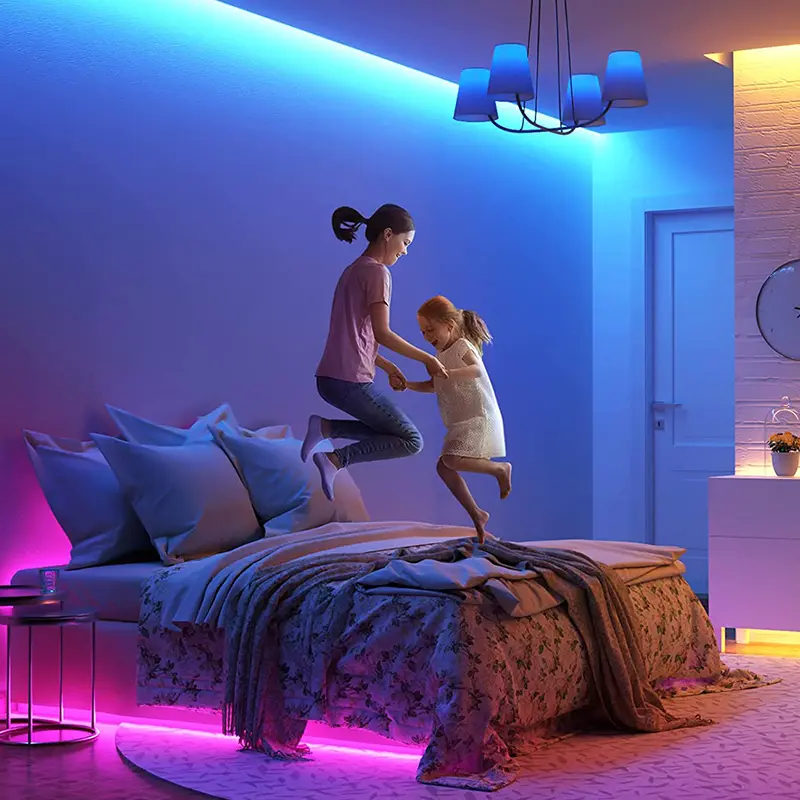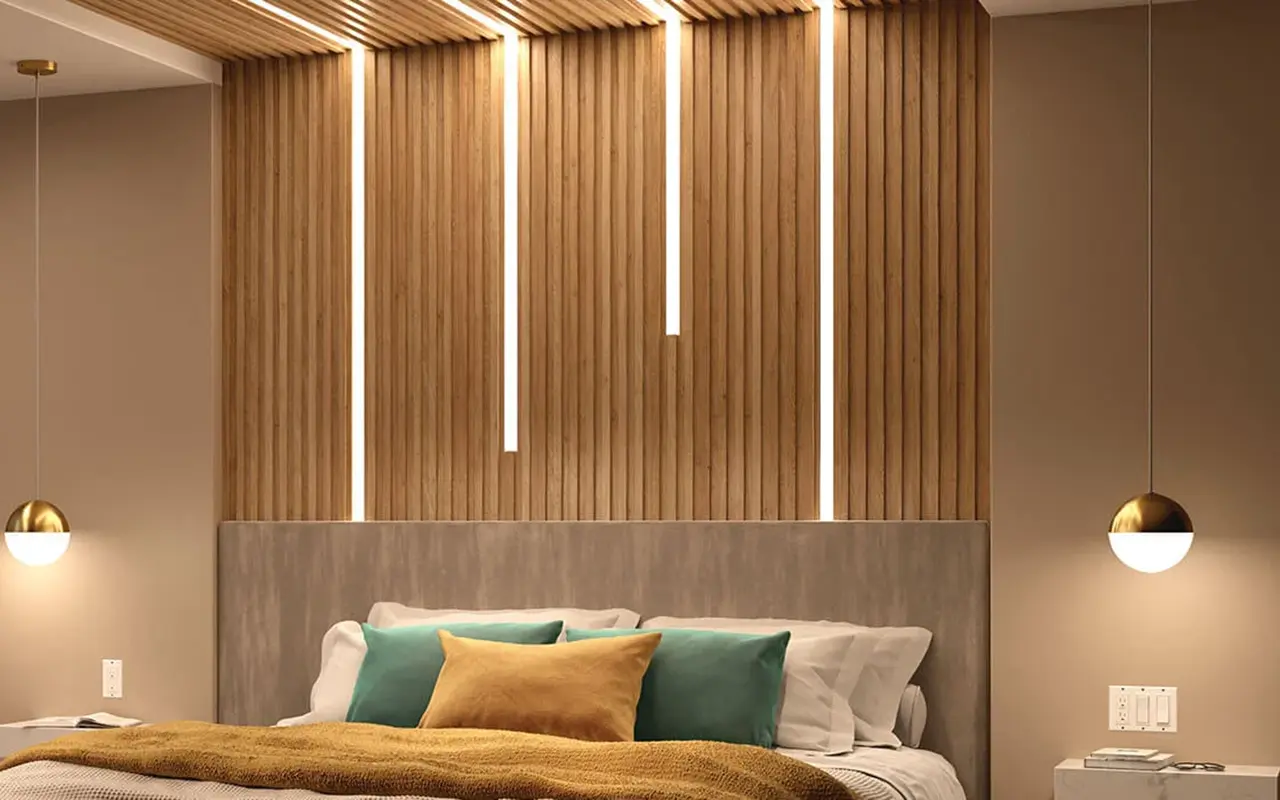Do you struggle with not sleeping well and feeling tired in the morning? Many people today have trouble sleeping well, which can be frustrating. Have you thought about how the LED light in your bedroom affects your sleep and what color light is best for sleep? It’s time to take a closer look at the role of light in your sleep environment.
For better sleep, use a gentle red or amber LED light. These colors help you relax and match your body’s natural sleep pattern. These warm hues are more than just aesthetic choices; they actively interact with your body’s internal processes to create a conducive environment for rest.
But how does this work, and what’s the science behind these specific color choices? Are there more factors to consider in selecting the right LED light for your bedroom? We’re exploring how the color of LED lights can improve your sleep. This includes biology, room design, and common misconceptions. If you want to sleep better, keep reading to find out how changing your lighting can help.
The Connection Between Sleep and Light
Light is not just for seeing. It is very important for our bodies, especially when we sleep. Our relationship with light affects our sleep in profound ways. Let’s discover how LED light colors affect our sleep, it’s really interesting.
Understanding the Sleep-Wake Cycle
The human body’s sleep-wake cycle is a complex process intricately connected to light. Our internal biological clock, called the circadian rhythm, tells us when we feel awake or tired. How does light fit in? The cells in our eyes that detect light, especially blue light, send signals to the brain. These signals affect the production of melatonin, a hormone that helps with sleep.
Our daily use of screens and artificial lighting exposes us to a lot of blue light, especially at night. When we disrupt our natural sleep rhythms, it becomes hard to fall asleep and messes up our sleep patterns.
To find the best sleep solution, it’s important to know how different LED colors impact sleep. It isn’t just about turning off the lights but choosing the right light.
LED Colors and Their Impact
Different colors of LED lights have varied effects on our ability to sleep. Our response to these colors isn’t merely psychological; it’s physiological.
Blue or White Light: These bright colors inhibit melatonin secretion and promote wakefulness. They mimic daylight, tricking the body into thinking it’s time to be active.
Amber Light: It is a calming color that promotes better sleep by encouraging melatonin secretion. It creates a warm atmosphere that doesn’t stimulate the brain. It’s the gentle nudge toward relaxation that your body appreciates.
Red Light: Recognized as the best calming color for sleep, red light ensures minimal disruption to the circadian rhythm. Night lamps or accent lighting can provide tranquility without affecting melatonin production.
When you pick the right LED colors, your surroundings match your body’s natural processes, promoting a peaceful sleep.
Best LED Color for Sleep: Why Choose Red or Amber?
People favor red and amber lights for their warm, relaxing qualities. Red and amber lights do not disrupt your sleep-wake cycle like blue and green lights.
These colors not only look nice, but also help our bodies in different ways. Have you ever felt calm by a campfire or watching a sunset? Those warm colors have a soothing effect. Adding red or amber LED lights to your bedroom has multiple benefits. It improves sleep quality, reduces eye strain, and syncs your body’s rhythm with nature.
Red and amber lights are great for sleep because they boost melatonin and match our body’s rhythm. They also create a soothing atmosphere. If you want a sleep-friendly space for you or your kids, these colors create a dreamy atmosphere. To get better sleep, it’s important to understand how light affects our sleep.
Selecting the Ideal LED Bulb for Sleep
It’s important to choose the right LED bulb for a sleep-friendly space. It’s not just an afterthought. Let’s find out how to choose the right LED bulb and create the perfect sleep atmosphere.
Types of LED Bulbs
Looking for the perfect sleep-enhancing bulb? It’s more complex than grabbing the first one off the shelf. There’s science behind the selection, and it’s worth your attention.
Color Customization: Consider bulbs that offer color customization, particularly those that emit red and amber hues. These colors are designed to help with sleep, emitting zero blue and green light. These bulbs have adjustable settings so you can customize the light to fit your needs.
Brightness Control: Opting for bulbs with brightness control can further enhance your sleep environment. Dimming the lights as bedtime approaches can signal your body that it’s time to wind down.
Smart Bulbs: Many modern LED bulbs integrate with smart home systems, allowing you to program them according to your sleep routine. The bulbs can mimic sunlight by changing color and dimming at specific times.
Setting the Perfect Sleep Atmosphere
The atmosphere of your bedroom plays a significant role in your sleep quality. Think of it as a symphony, where each element contributes to harmony.
Lights: Soft red or amber lights can create a calming environment conducive to a peaceful night’s sleep. They act as the gentle undertone to your sleep symphony.
Furniture: Coupling these lights with cozy furniture like plush pillows and soft blankets adds comfort.
Room Temperature: A cool room temperature, ideally between 60-67°F, is often best for sleep. It helps your body signal that it’s time to rest.
Consider all these factors to create a bedroom that helps you sleep deeply and restfully.
Buying Guide
When purchasing an LED bulb for sleep, here’s a handy checklist to keep in mind:
Check if the light emits blue or green light; if so, it might not be the best choice.
Consider bulbs with adjustable brightness and hue, providing the flexibility you need.
Look for specialized sleep-friendly bulbs or brands known for quality lighting solutions. Reading customer reviews can be a helpful way to gauge user satisfaction.
Designing a Sleep-Friendly Environment
Your sleep environment is about more than just the correct bulb. We can make your bedroom perfect for sleeping by adding things, using smart technology, and being creative.
More Than Just Bulbs
To create a better atmosphere, you can add blackout curtains to block light. You can also use comfortable furniture for physical comfort. Additionally, a well-planned layout can make the most of the space and flow. With the correct LED light, these factors make a good atmosphere for sleeping. A few strategically placed plants can also enhance air quality and add to the calming effect.
Intelligente Integration
Combine LED lights and smart home devices to easily control brightness and color. Picture entering your bedroom and the lights slowly dimming to your desired level without any effort. Automation can create a perfect sleep environment without needing manual changes, making it easier and more reliable.
Creative DIY Ideas
Your bedroom should show who you are, and LED lights can be customized in many ways.
Craft a calming ambiance using LED strips around your bed or on the shelves.
Use lanterns or specially designed lamps with soft, warm hues for accent lighting.
Tailor the lights to your taste and watch how it transforms your sleep experience. Experiment with different placements and combinations, and even integrate them into artworks.
Health and Wellness through Proper Sleep Lighting
When discussing health and wellness, nutrition and exercise often steal the spotlight. Have you thought about how the right lighting for sleep can affect your well-being? Let’s explore how lighting can enhance sleep quality, offer medical advantages, and even change lives through real success stories.
Better Sleep Quality
Good lighting not only creates a mood but also helps you sleep better, which has real benefits.
Improved Alertness: When you enjoy quality sleep, you wake up feeling more alert and concentrated. Your mind is sharp, ready to tackle the day’s challenges.
Restorative Rest: Red and amber LED lighting can offer a more restful sleep by aligning with your body’s natural circadian rhythm. This includes assisting with muscle relaxation, and helping you wake up feeling refreshed.
Mood Enhancement: A good night’s sleep promotes a positive mood, and the correct lighting can contribute to reducing stress and anxiety.
Medical Advantages
Colored LED lights, like red and amber, have therapeutic uses that are worth exploring. They can improve well-being.
Mood and Mental Health Support: Some studies suggest that these colors positively affect mood and mental health, assisting in conditions like Seasonal Affective Disorder (SAD).
Skin Health: Red LED light, in particular, has been shown to promote skin health by stimulating collagen production, an unexpected but welcome benefit.
Holistic Wellness: The calming effects of red and amber lights extend to overall well-being, offering a soothing ambiance that contributes to relaxation and harmony.
Real-Life Success Stories
The power of proper lighting goes beyond theory. Many people have found that using sleep-friendly LED lights can improve their sleep and overall well-being. Their stories, often shared through testimonials and personal blogs, are testaments to the transformative power of proper lighting. Regular people can solve problems by simply changing the lighting in their bedrooms. It’s inspiring and eye-opening.
FAQs and Common Misconceptions
Sleep lighting is a complex topic with many facets to explore. We’ll debunk myths and give tips for special cases, with extra resources for more understanding.
What is the best color night light for sleeping babies?
Soft red or amber night lights are ideal for sleeping babies. These colors promote relaxation without disrupting the baby’s delicate sleep cycle. Some parents also prefer soft pink, which provides a gentle, calming effect.
Is blue LED light a good color to sleep with?
Bright blue LED lights can disrupt sleep by confusing the body’s internal clock. However, softer shades of blue can have a calming effect when used correctly. It’s wise to avoid blue lights before bedtime as a general rule.
How do red and amber lights enhance sleep quality?
Red and amber lights help you relax and match your body’s natural sleep-wake cycle. The warm colors help you sleep peacefully because they don’t affect melatonin production.
Can green LED light be used to promote sleep?
Yes, connecting green light to tranquility promotes a peaceful environment. It is a color often found in nature and can create a serene ambiance conducive to restful sleep.
What are some creative DIY ideas for using LED lights for sleep enhancement?
You can create a calming ambiance using LED strips, lanterns, or lamps tailored to your taste. You can make a night sky projection. You can also make a softly lit reading corner. Both have adjustable brightness. This will help you sleep better.
Are there any medical advantages to using colored LED lighting for sleep?
Researchers have linked colored LED lighting, especially red and amber, to therapeutic uses. Some studies suggest that it can boost your mood and mental health, improving sleep and well-being.
What are some good ways to use LED lights in a sleep-friendly routine?
To improve sleep, use amber lights in the evening and switch to red light bulbs before bed. Combining LED lights with smart home devices can improve the sleep environment.
How can I avoid harmful blue or green light when choosing LED bulbs for sleep?
Look for specialized sleep-friendly bulbs that emit zero blue and green light. Consider product specifications. Look for bulbs with adjustable brightness and hue controls. Make sure they help improve sleep.
Is purple LED light good for sleep?
Purple LED light isn’t typically associated with sleep enhancement. Bright blue light is more disruptive, while red, amber, or soft green are more calming. It might be best to stick to the more recommended hues for sleep.
What LED light color helps you wake up?
Brighter shades like white and bright blue stimulate alertness. Using these colors in the morning can signal to your body that it’s time to wake up. This aligns with your natural wakefulness rhythm.
Debunking Myths
Nicht alle roten oder gelben Lampen sind gleich. Um schädliches Licht zu vermeiden, ist es wichtig, Glühbirnen zu verwenden, die für die richtigen Wellenlängen ausgelegt sind. Um die beste Wahl zu treffen, sollten Sie auf die Details achten, zertifizierte Produkte wählen und Experten um Rat fragen.
Tipps für besondere Fälle
Die individuellen Bedürfnisse sind unterschiedlich, und das gilt auch für die Beleuchtung im Schlaf. Hier erfahren Sie, wie Sie auf diese Unterschiede eingehen können:
Kinder: Erwägen Sie für Kinderzimmer eine sanftere Beleuchtung, da ihre Augen empfindlicher sind.
Ältere Menschen: Suchen Sie nach Optionen, die sich leicht bedienen lassen und nicht zu dunkel sind, da die Sehkraft mit zunehmendem Alter abnimmt.
Gesundheitliche Bedingungen: Bestimmte Erkrankungen, wie Schlaflosigkeit, können spezielle Beleuchtungslösungen erfordern. In diesen Fällen kann eine Beratung durch medizinisches Fachpersonal hilfreich sein.
Bestimmte Farben und ihre Wirkung verstehen
Bei unserem Streben nach optimalem Schlaf spielt die Farbe eine entscheidende Rolle. Um fundierte Entscheidungen treffen zu können, ist es wichtig zu verstehen, wie verschiedene Farben den Schlaf beeinflussen. Entdecken wir die beruhigende Wirkung von rotem und bernsteinfarbenem Licht. Vermeiden Sie bestimmte Farben. Wir werden auch andere beruhigende Farben erforschen, die Sie interessieren könnten.
Rote und gelbe Lichter
Die warmen Farben helfen Ihnen beim Schlafen und Entspannen. Sie sind einladend und wohltuend.
Förderung der Entspannung: Es wird angenommen, dass rotes und bernsteinfarbenes Licht den Geist beruhigt und den Übergang in den Schlaf erleichtert. Dieser Effekt wird häufig in Therapie- und Meditationsräumen genutzt, um die Ruhe zu verbessern.
Anpassen an den zirkadianen Rhythmus: Im Gegensatz zu anderen Farben passen sich diese warmen Töne gut an den natürlichen Schlaf-Wach-Rhythmus des Körpers an und tragen dazu bei, dass dieser Rhythmus ausgeglichen und nicht unterbrochen wird.
Ästhetische Anziehungskraft: Abgesehen von den physiologischen Vorteilen verleihen diese Farben Ihrem Schlafzimmer eine angenehme Atmosphäre und machen es gemütlich und einladend.
Zu vermeidende blaue und weiße Lichter
Andererseits können blaues und weißes Licht den Schlaf stören. Wenn Sie die Gründe dafür kennen, können Sie eine bessere Wahl für Ihren Schlafplatz treffen.
Verwirrung der biologischen Uhr: Diese Farben senden alarmierende Signale an das Gehirn, bringen die innere biologische Uhr des Körpers durcheinander und verzögern den Beginn des Schlafs.
Hemmung der Melatoninproduktion: Blaues und weißes Licht am Abend kann die Ausschüttung von Melatonin hemmen, dem Hormon, das dem Körper signalisiert, dass es Zeit zum Schlafen ist.
Assoziiert mit Bildschirmzeit: Das schädliche blaue Licht stammt oft von elektronischen Geräten, was die Notwendigkeit eines bildschirmfreien Schlafzimmers oder die Verwendung von Nachtmoduseinstellungen an Ihren Geräten unterstreicht.
Die entspannendsten Lichtfarben
Wir finden andere Farben mit einzigartigen Vorteilen, die über Rot und Amber hinausgehen. Hier ist eine tiefer gehende Erkundung:
Rot: Wie bereits erwähnt, ist es ein starker Verbündeter für den Schlaf, aber auch für Leidenschaft und Wärme.
Rosa: Bekannt für seine sanfte, beruhigende Wirkung, insbesondere die sanfteren Töne, die Gefühle von Sicherheit und Liebe vermitteln.
Grün: Diese natürliche Farbe ist mit Ruhe verbunden und wird manchmal in der Therapie eingesetzt, um eine friedliche Umgebung zu schaffen.
Blau: Während leuchtendes Blau vermieden werden sollte, können sanftere Töne bei richtiger Anwendung beruhigend wirken.
Strategien und gesunde Gewohnheiten für guten Schlaf
Die Schaffung eines Schlafplatzes erfordert mehr als nur die Wahl der richtigen Glühbirnen. Um Ihre Lieblingsfarben noch entspannender zu machen, sollten Sie Strategien und gesunde Gewohnheiten anwenden.
Wann sollten bestimmte Farben verwendet werden?
Das Timing ist wichtig, vor allem, wenn es um Licht geht.
Bernstein im ganzen Haus: Erwägen Sie, abends in den Wohnräumen bernsteinfarbenes Licht zu verwenden. Dies erleichtert den Übergang in die Nacht und schafft die Voraussetzungen für Entspannung.
Rote Glühbirnen vor dem Schlafengehen: Wenn Sie einige Stunden vor dem Schlafengehen auf rote Glühbirnen umschalten, signalisieren Sie Ihrem Körper, dass es Zeit ist, zur Ruhe zu kommen, was die allgemeine Schlafqualität verbessert.
Beruhigende Gewohnheiten und Tipps
Wenn Sie Ihre LED-Leuchten mit zusätzlichen Gewohnheiten kombinieren, wird die Wirkung verstärkt.
Körperliche Betätigung: Ein ausgewogenes Bewegungsprogramm während des Tages fördert einen besseren Schlaf.
Regelmäßige Schlafzeiten: Eine gleichbleibende Schlafdauer stärkt den natürlichen Rhythmus Ihres Körpers.
Blaulicht-Blocker-Brille: Bei der abendlichen Nutzung von elektronischen Geräten kann diese Brille die Blaulichtexposition reduzieren, indem sie sich an die von Ihnen gewählte Beleuchtung anpasst.
Abschließende Überlegungen
Die Verbesserung des Schlafs durch Beleuchtung ist ein differenziertes Unterfangen, das über das bloße Umlegen eines Schalters hinausgeht; es erfordert einen detaillierten, durchdachten Ansatz. Das Erkennen der Feinheiten bei der Wahl der Beleuchtung ist von entscheidender Bedeutung - so steht beispielsweise die beruhigende Wirkung von rotem und gelbem LED-Licht in scharfem Kontrast zu dem potenziell störenden Einfluss von blauem und weißem Licht. Wenn Sie diese Erkenntnisse in Ihre nächtliche Routine integrieren und gleichzeitig gesunde Gewohnheiten beibehalten, können Sie Ihre Schlafqualität erheblich verbessern. Die Beleuchtung sollte als zentrales Element Ihrer Schlafumgebung betrachtet werden, das in der Lage ist, Ihre nächtliche Erfahrung in eine ruhige Reise in Richtung Verjüngung und Wohlbefinden zu verwandeln. Indem Sie sich auf die "beste Lichtfarbe für den Schlaf" konzentrieren und die "entspannendste Lichtfarbe für den Schlaf" herausfinden, können Sie eine ruhige Atmosphäre schaffen, die einen erholsamen Schlaf fördert. Bei der richtigen Beleuchtung geht es nicht nur darum, den Schlaf zu fördern, sondern auch darum, einen Weg zu allgemeinem Wohlbefinden einzuschlagen, wobei die Wahl der Lichtfarbe eine Schlüsselrolle bei der Förderung einer friedlichen, erholsamen Nachtruhe spielt.
Entdecken Sie den Schlüssel zu besserem Schlaf mit Unitop. Wir sind ein Top LED-Leuchtbänder und Neon-Flex Hersteller in China. Wir entwerfen unsere hochwertigen Produkte, um Ihr Wohlbefinden mit perfekter Beleuchtung zu verbessern. Wir haben viele Jahre Erfahrung. Haben Sie Fragen oder besondere Anforderungen? Kontaktieren Sie uns und lassen Sie sich von Unitop auf dem Weg zu einem erholsamen Schlummer begleiten. Ihr Weg zu erholsamen Nächten beginnt hier.
Verwandter Artikel:

Tom ist jetzt der Verkaufsleiter von Unitop (China) Co., Limited. Er war in der LED-Beleuchtung Industrie seit 2005. Er ist Experte für Vertrieb und Marketing sowie für Fabrikmanagement. Er mag Bodybuilding und ist außerdem ein verrückter Apple-Fan! Er ist ein fleißiger Kerl und liebt es, neue Dinge zu lernen und auszuprobieren.
E-Mail: tom@unitopledstrip.com WhatsApp: +86-18680307140








Hinterlasse einen Kommentar
An der Diskussion beteiligen?Hinterlasse uns deinen Kommentar!